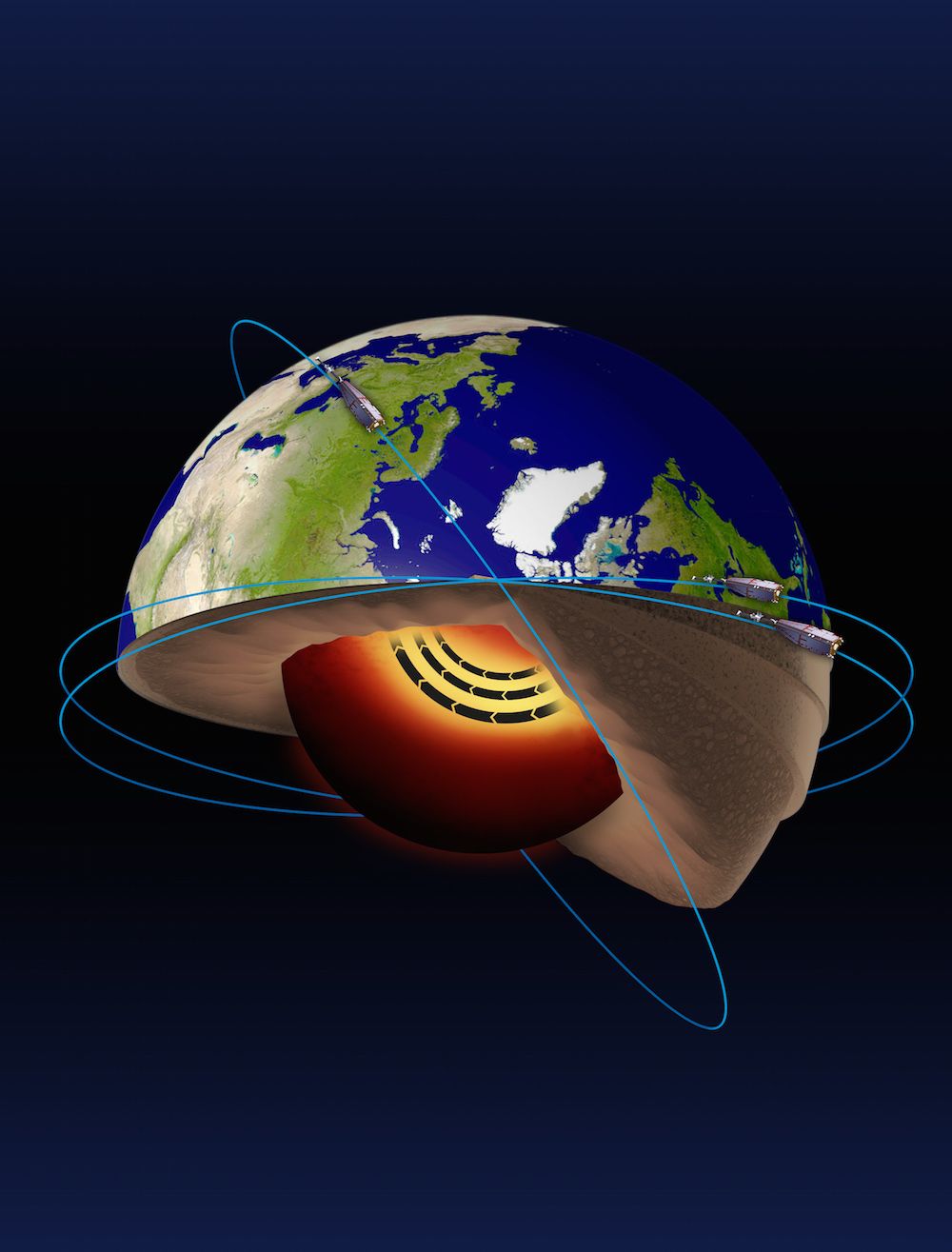Molten 'Jet Stream' Discovered Deep Inside Earth

A band of molten iron is churning slowly deep inside Earth, much in the same way as a jet stream, a new study finds.
Scientists discovered the so-called molten jet stream while analyzing data from a trio of European satellites, called Swarm. The satellites launched in 2013 with the goal of studying Earth's magnetic field. In this case, Swarm's observations helped create a view akin to an X-ray of the planet, the researchers said.
"The European Space Agency's Swarm satellites are providing our sharpest X-ray image yet of the core," the study's lead researcher, Phil Livermore, an associate professor in the School of Earth and Environment at the University of Leeds in England, said in a statement. "We've not only seen this jet stream clearly for the first time, but we understand why it's there." [Photos: Hidden Ocean Locked Up Deep in Earth's Mantle]
Earth's core is buried under about 1,900 miles (3,000 kilometers) of rock, so scientists study it indirectly by measuring the planet's magnetic field. For instance, changes in the magnetic field suggested that liquid iron in the outer core moves faster in the Northern Hemisphere, largely beneath Alaska and Siberia, the researchers said.
New Swarm data has helped clarify Earth's inner workings. For example, the changes in the magnetic field are actually being caused by the molten jet stream, which moves about 25 miles (40 km) per year, currently in a westward direction, the researchers found.
That speed is three times faster than normal outer-core speeds, and hundreds of thousands of times faster than the rate at which Earth's tectonic plates move, they noted.
Swarm's data also allowed the researchers to pinpoint the jet stream's location: It flows along a boundary between two different regions in the core, the researchers found. This movement is likely caused when liquid in the core flows toward the boundary from both sides, and then is squeezed out sideways, they said. [Photo Timeline: How the Earth Formed]
Sign up for the Live Science daily newsletter now
Get the world’s most fascinating discoveries delivered straight to your inbox.
"Of course, you need a force to move the liquid toward the boundary," said study co-author Rainer Hollerbach, a professor of theoretical fluid dynamics at the School of Mathematics at the University of Leeds. "This could be provided by buoyancy, or perhaps more likely from changes in the magnetic field within the core."
This discovery is Swarm's first deep-Earth finding, and researchers hope that another is on the horizon. For now, the satellites are still circling the planet, measuring and untangling magnetic signals from the core, mantle, crust, oceans, ionosphere (an energetic part of the atmosphere about 50 miles, or 80 km, above the ground that has electrically charged particles) and magnetosphere (the magnetic field surrounding Earth), they said.
"Further surprises are likely," said study co-author Rune Floberghagen, the European Space Agency's Swarm mission manager. "The magnetic field is forever changing, and this could even make the jet stream switch direction."
The study was published online today (Dec. 19) in the journal Nature Geoscience.
Original article on Live Science.

Laura is the archaeology and Life's Little Mysteries editor at Live Science. She also reports on general science, including paleontology. Her work has appeared in The New York Times, Scholastic, Popular Science and Spectrum, a site on autism research. She has won multiple awards from the Society of Professional Journalists and the Washington Newspaper Publishers Association for her reporting at a weekly newspaper near Seattle. Laura holds a bachelor's degree in English literature and psychology from Washington University in St. Louis and a master's degree in science writing from NYU.









